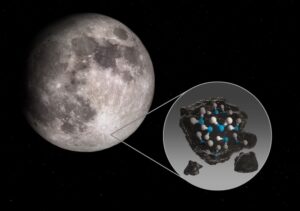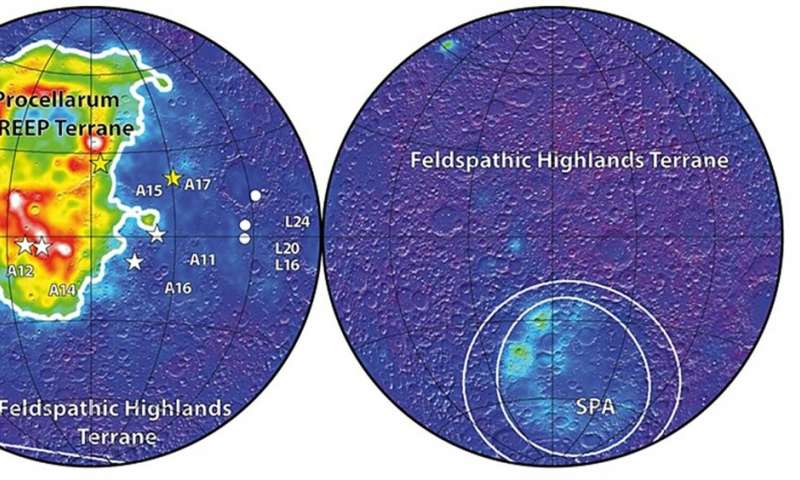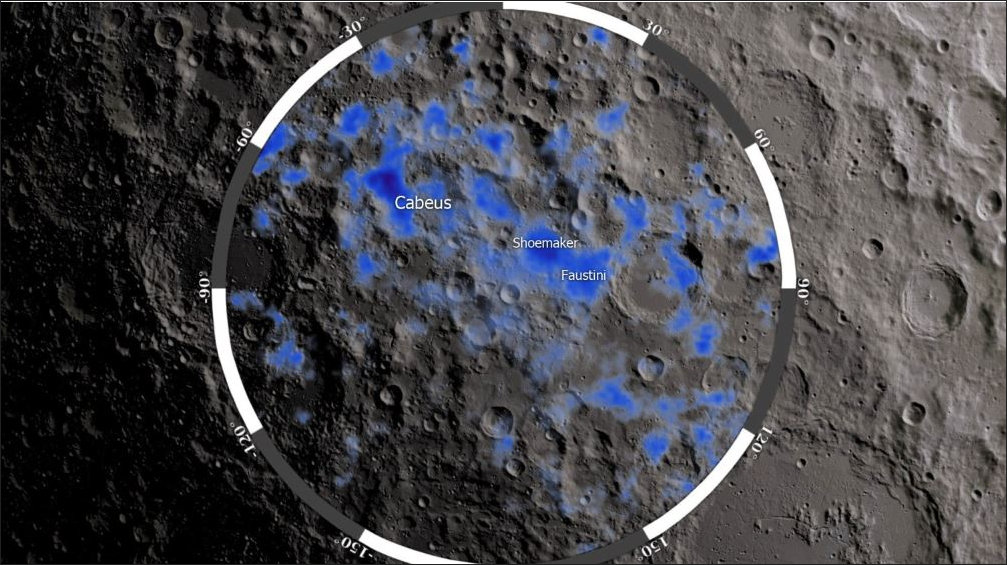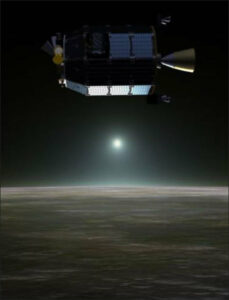
The Stratospheric Observatory for Infrared Astronomy (SOFIA) has detected evidence of molecular water in the regolith of Clavius Crater, a large crater visible from Earth in the Moon’s southern hemisphere. The airborne SOFIA observatory, a partnership between NASA and the German Aerospace Center, flies in a modified Boeing 747SP aircraft above the atmospheric water that blocks ground observation.
Satellites have had detected “hydrates” in the lunar regolith but could not distinguish between OH (hydroxyl) and H20 (molecular water). SOFIA was able to measure the precise being vibration of the H-O-H molecular bond at 6.1 µm in the infrared.
SOFIA targeted high lunar latitudes near the South Pole where low temperatures could allow migrating water to transiently remain on the surface and high hydroxyl abundances could create and trap water when impacted by small meteorites. Although Clavius has a relatively high concentration of water by lunar standards, says NASA, it is roughly one-hundredth of the water found in the Sahara desert. more “Molecular Water Found in Clavius Crater”



